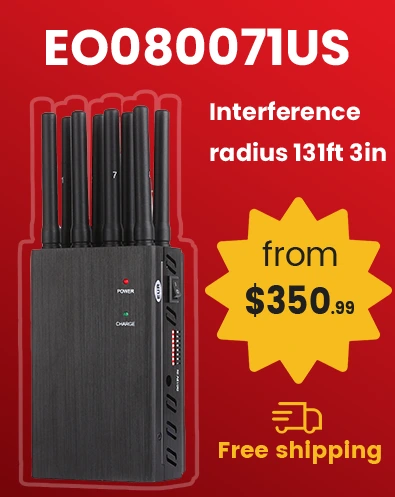The Radio Spectrum Management (RSM) is the regulatory body that oversees the use of the radio spectrum in New Zealand. The agency is responsible for enforcing laws and regulations regarding the use of the radio spectrum, including those relating to signal jammers.
Cell Phone Jamming Device and Network Jammer in New Zealand
Mobile phones are ubiquitous in modern society, but sometimes you may need to block the phone signal. Whether it's for confidentiality reasons, to keep certain areas quiet or for safety reasons, blocking the phone signal is a viable solution. This article will provide you with information on the frequencies required to block mobile phone signals in New Zealand.
In New Zealand, there is no legal authorization to use a signal jammer. Deliberately interfering with wireless signals is illegal and carries severe penalties.
New Zealand's 5G network is gradually being promoted, and Spark, Vodafone and 2degrees have launched 5G networks in major cities. The government completed the auction of the 3.5 GHz spectrum band in 2020, laying the foundation for the construction of 5G networks.
There are several mobile phone service providers in New Zealand. Here are the exact names of the main providers and the frequency bands they currently use:
Spark New Zealand is one of New Zealand's largest telecommunications operators. Formerly Telecom New Zealand, it changed its name to Spark in 2014, symbolizing its transformation into a digital and customer-centric modern telecommunications service provider. Spark's 4G LTE network has good coverage in most parts of New Zealand, especially in cities and major rural areas. Spark is the first operator in New Zealand to launch a 5G network, mainly in major cities such as Auckland, Wellington, and Christchurch, and plans to expand to more areas in the future.
Frequency strips: 700 MHz (B28), 1800 MHz (B3), 2100 MHz (B1), 2600 MHz (B7)
Vodafone New Zealand is part of the British Vodafone Group. Founded in 1998, it is the second largest telecommunications operator in New Zealand. Vodafone's 4G LTE network has wide coverage in most parts of New Zealand, especially in major cities and tourist areas, where the signal quality is good.
Frequency strips: 700 MHz (B28), 1800 MHz (B3), 2100 MHz (B1), 2600 MHz (B7)
2degrees is New Zealand's third largest telecommunications operator. Founded in 2009, it is a relatively young operator that entered the market with the goal of increasing competition, reducing communication costs, and providing consumers with more choices. 2degrees' 4G LTE network covers most of New Zealand, especially in major cities and densely populated areas.
Frequency strips: 700 MHz (B28), 900 MHz (B8), 1800 MHz (B3), 2100 MHz (B1)
Now that we know the frequencies used by the main mobile phone service providers in New Zealand, we can determine the frequency bands needed to effectively block mobile phone signals.
To block mobile phone signals, you must purchase a mobile phone signal jammer that covers the frequency bands used by your service provider. In New Zealand, the most commonly used frequency bands are 700 MHz (B28), 1800 MHz (B3) and 2100 MHz (B1). To effectively block signals, it is recommended to choose a mobile phone signal jammer that covers these frequency bands.
Our frequency checker tool will help you check all frequency bands used in all country.







